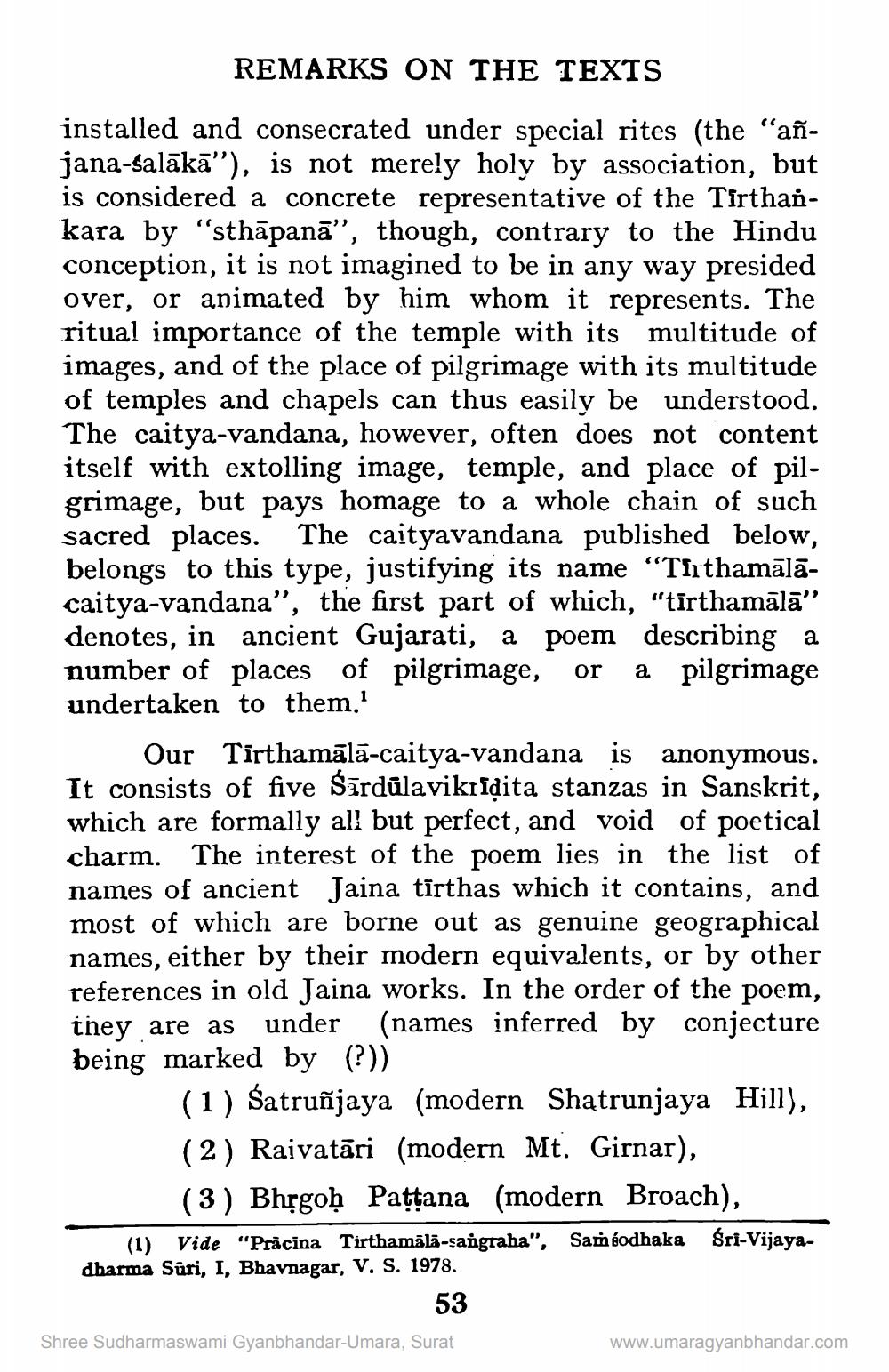________________
REMARKS ON THE TEXTS installed and consecrated under special rites (the "añjana-salākā"), is not merely holy by association, but is considered a concrete representative of the Tirthankara by “sthāpanā”, though, contrary to the Hindu conception, it is not imagined to be in any way presided over, or animated by him whom it represents. The ritual importance of the temple with its multitude of images, and of the place of pilgrimage with its multitude of temples and chapels can thus easily be understood. The caitya-vandana, however, often does not content itself with extolling image, temple, and place of pilgrimage, but pays homage to a whole chain of such sacred places. The caityavandana published below, belongs to this type, justifying its name “Tithamālācaitya-vandana”, the first part of which, "tīrthamālā" denotes, in ancient Gujarati, a poem describing a number of places of pilgrimage, or a pilgrimage undertaken to them."
Our Tirthamālā-caitya-vandana is anonymous. It consists of five Sārdūlavikıiļita stanzas in Sanskrit, which are formally all but perfect, and void of poetical charm. The interest of the poem lies in the list of names of ancient Jaina tīrthas which it contains, and most of which are borne out as genuine geographical names, either by their modern equivalents, or by other references in old Jaina works. In the order of the poem, they are as under (names inferred by conjecture being marked by (?))
(1) Śatruñjaya (modern Shatrunjaya Hill), (2) Raivatāri (modern Mt. Girnar),
(3) Bhỉgoḥ Pattana (modern Broach), (1) Vide "Prācina Tirthamālā-sangraha", Sambodhaka Śri-Vijayadharma Süri, I, Bhavnagar, V. S. 1978.
53
Shree Sudharmaswami Gyanbhandar-Umara, Surat
www.umaragyanbhandar.com




